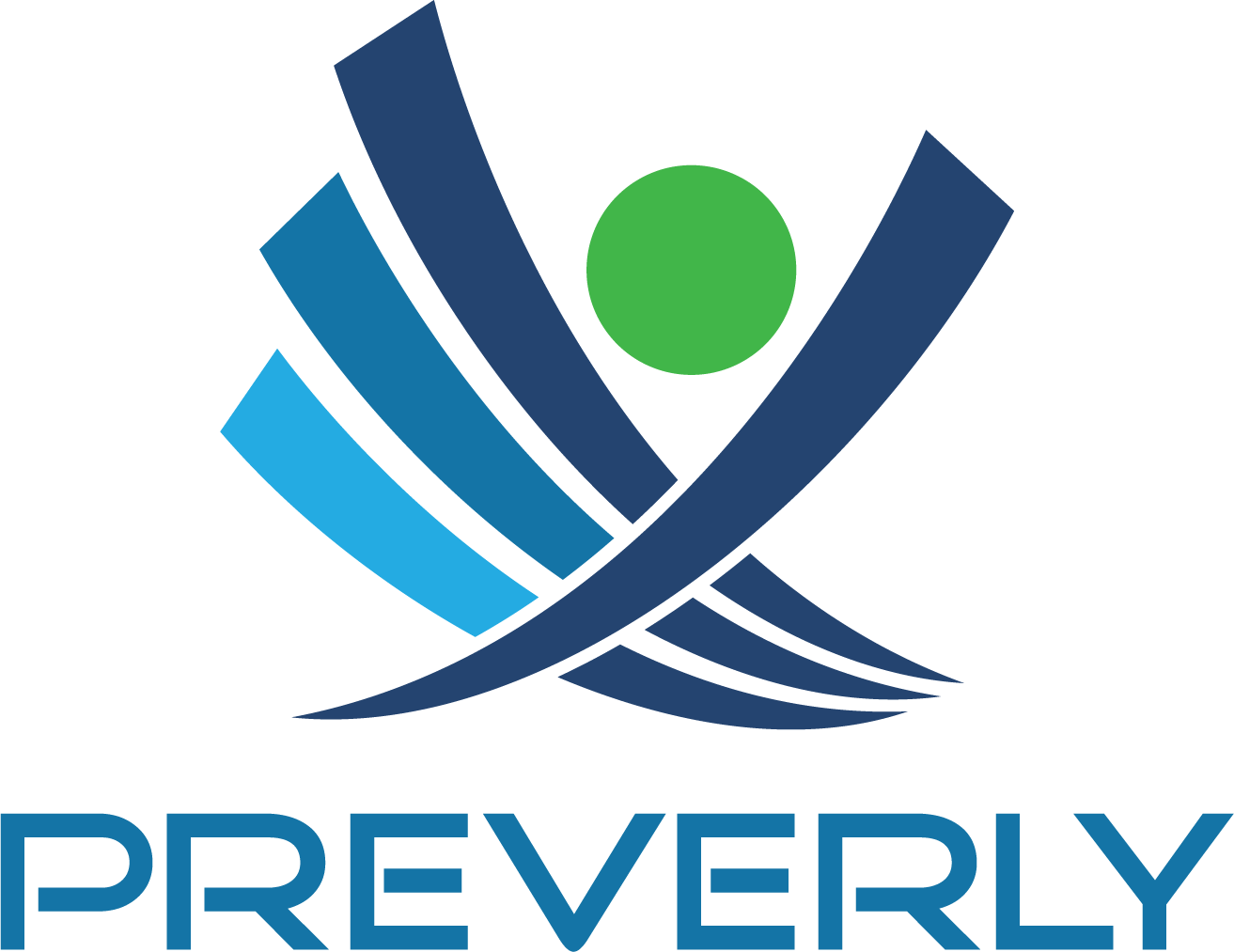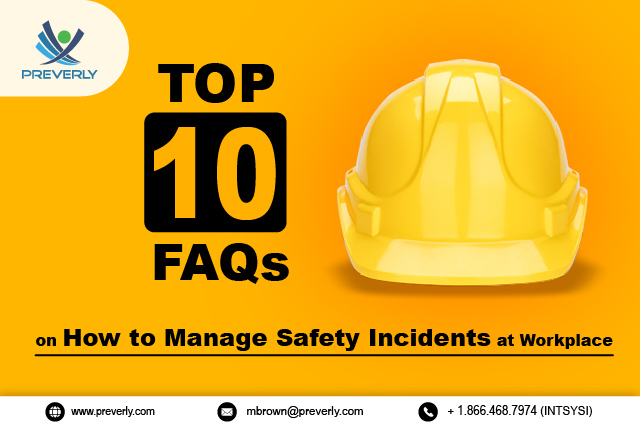Preverly Safety Software and Its Role in Incident Lifecycle Management
Organizations use safety management software for de-escalating, resolving, and preventing workplace incidents. However, the effectiveness of a safety incident management software is determined by the role and responsibilities it fulfils in the incident lifecycle. For this reason, every organization should have a clear understanding of how the lifecycle of workplace safety incident works. This information can help you decide the best incident management software for improving the workplace safety of your organization
Preverly is a flexible safety management software that smoothly integrates itself in the incident lifecycle. Across multiple stages of the life cycle, Preverly plays a dynamic role by helping safety managers perform multiple functions. Without an effective safety management software like Preverly, work-related incidents of your organization can quickly escalate into severe disruptions, financial setbacks, even loss of life.
In this blog, we discuss the lifecycle of workplace safety incidents in detail. As we walk through different stages of incident management, you’ll also learn how Preverly’s safety management software plays its role in each phase of the incident lifecycle.
This blog covers:
What is an Incident Lifecycle?
The Incident lifecycle is a series of actions and processes involved in the management of workplace safety. From reporting new incidents to resolving and closing them, the incident lifecycle captures every step of the way. Therefore, it is an essential roadmap for organizations to follow and adhere to during incident management. In simple words, your organization can run an effective incident management system by understanding the incident lifecycle and implementing safety management software across its phases and processes.
There are different phases to the incident lifecycle, each responsible for a specific action or purpose. These phases can help your organization in breaking down the complex incident management system into simple and actionable parts. The key phases of the incident lifecycle include:
- Reporting New Incidents
- Tracking Incident Progress
- Monitoring Unresolved Incidents
- Resolving Incidents
- Closing Resolved Incidents
These different phases help safety managers record, track, and analyze incidents before they spill into other business areas and cause issues in business operations. This phased incident lifecycle aims to streamline incident management tasks and bring efficiency in the outcomes of incident management software.
How Does Incident Management Work with Preverly Safety Management Software?
Before digging into the specifics of the incident lifecycle, your organization should better comprehend incident management and how it works. Incident management is a process that \ helps your organizations identify, evaluate, resolve, and correct safety incidents at work. For example, work-related hazards like spillage or faulty equipment can be fixed and prevented with an effective incident management system.
Preverly, safety management software is central to the incident management process. It has advanced capabilities of recording, analyzing, and tracking incidents. At the same time, a safety management software like Preverly serves a reactive purpose of incident management. It helps in providing instant communication for fast medical response to the incident sites. Moreover, the software also helps record and upload incident-related data in photos, videos, documents, and other formats.
By understanding incident management, your organization will follow the critical step-by-step process of incident lifecycle efficiently. With Preverly safety management software, your organization can monitor and improve the incident management life cycle towards making your workplace incident-free.
Incident Lifecycle – Stages and Responsibilities
Now, let’s break down the incident lifecycle and understand the roles and responsibilities of each stage. As listed above, there are five stages in the incident management lifecycle. These stages collectively create a workflow of how incidents can be identified and resolved with the help of safety management software like Preverly.

Based on the Environmental Health and Safety (EHS) process, the incident management life cycle has multiple components. These components have been described below to realize how incident management becomes a systematic approach, especially when powered by safety management software.
Reporting New Incidents
In the first stage, safety managers and employees can use their workplace safety app on their mobile devices to report a new incident. The incident needs to be reported on multiple grounds. First, the details of the incidents such as location, employee information, health impact, property damage, etc., need to be recorded accurately On-site pictures should be clicked & attached wherever necessary. While reporting new incidents, the safety management software also updates the central repository and notifies safety managers and stakeholders about the new incident.
An example of an incident reporting form:
| Particulars | Information |
| Employee Name | John S. Smith |
| Employee Designation | Metal Molder |
| Employee Code | EM – 1561 |
| Incident Occurrence Time | 12:35:10 PM |
| Incident Occurrence Date | Monday, 12th June 2017 |
| Incident Location | Molder Compound #1, West Wing, Metal Foundry |
| Incident Type | Cuts and Abrasions |
| Incident Description | Invasive cut in the left-hand arm during metal handling |
| Possible Root Causes | Improper metal fabrication equipment |
This stage also involves an initial medical response action. The safety management software helps in sending alerts to the on-site medical team or local emergency service with real-time online communication. As a result, the incident-affected personnel gets treated quicker, which helps in saving their lives and reducing the cost of workplace injuries.
Tracking Incident Progress
This is an ongoing stage of the life cycle. Every active incident is tracked, and its progress needs to be updated accordingly. In this stage, Preverly safety management software offers KPI-based incident tracking. It helps in tracking the progress of incidents on various parameters such as DART rate, recorded incidents rate, potential hazards observed, etc.
With the help of safety incident tracking software, this part of the incident lifecycle can be reviewed and corrected by safety managers. The safety management software also helps in tracking the “In Progress” incidents with an investigative angle to find the root cause and avoid possible repercussions.
Monitoring Unresolved Incidents
The Incident lifecycle involves a monitoring stage, where “On Hold” incidents need to be checked and supervised regularly. In complex industrial settings, some incidents cannot be resolved or prevented instantly. Hence, Preverly safety management software helps in monitoring such unresolved incidents.
For example, Preverly works as a fire safety management software to monitor unresolved incidents caused by uncontrolled inflammable gas leaks. Similarly, it also works as an aviation safety management software to keep track of unresolved incidents in the air transport industry.
Resolving Incidents
Sooner or later, every incident gets resolved or finds a workaround. When this happens, the incident lifecycle moves up a stage. In this stage, the incidents may not be completely fixed, but they have been mitigated with EHS measures for a while. The safety management software helps in updating the status of such incidents as “Resolved”. During this process, the safety management software also helps the safety managers in ensuring no additional problems are caused by the same incident.
However, there may be instances where an incident moves back to “In Progress” or “On Hold” from “Resolved” status. In such a scenario, Preverly safety management software offers the flexibility of changing the status of resolved incidents and notifying the organization accordingly.
Closing Resolved Incidents
When a designated incident has been completely fixed or eliminated, the incident lifecycle is complete. In this last stage, the safety management software helps in compiling the data related to the closed incidents. In addition, it helps safety managers in sending notifications on closed incidents, which encourages employees to resume their work.
Data on closed incidents can be stored by the safety incident management software for further analysis. Furthermore, safety management software like Preverly also helps in generating insights on closed incidents to prevent their occurrences in the future. When the incident reaches this stage of the life cycle, it is no longer a threat to the occupational health and safety of the organization and its workforce.
Take Control of Your Incident Lifecycle with Preverly
Workplace incidents should not be taken lightly by any organization. Your organization must maintain compliance with the EHS-based incident lifecycle and its action plan. In this task, safety management software like Preverly can foster the productivity of your organization’s incident management lifecycle.
Preverly helps you mitigate accidents and find their root causes immediately. The safety management software also works as a safety observations management software to identify close-call incidents and possible hazards. It works as a safety tracking software that enables safety managers to take incident management into their own hands. With a safety incident software like Preverly, your organization can improve its employee morale by keeping the incident lifecycle working at maximum efficiency.
Do you want to implement an effective incident management lifecycle in your organization? Check out the brochure of Preverly safety management software and get in touch with us at mbrown@preverly.com for more information on incident lifecycles.





